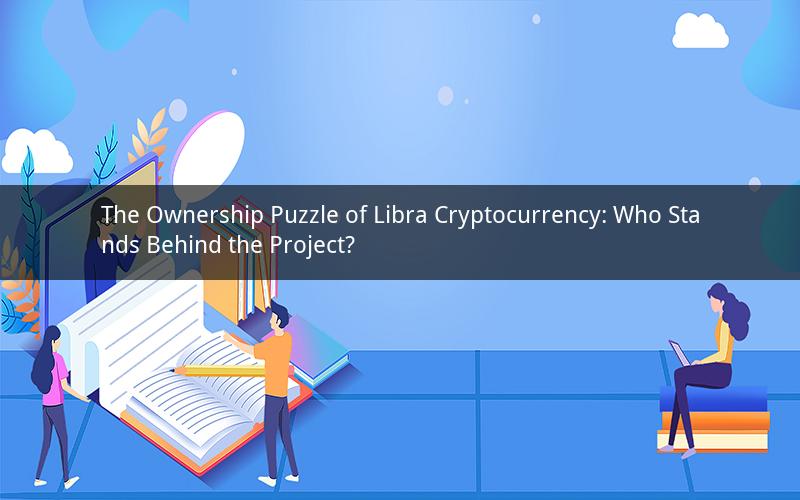
In the ever-evolving world of cryptocurrencies, Libra has emerged as a significant figure, captivating the interest of investors, technologists, and regulatory bodies alike. With its promise of a decentralized digital currency, Libra has been a topic of much debate. One burning question that has sparked intense scrutiny is: who owns Libra cryptocurrency? This article delves into the complex ownership structure of Libra, its stakeholders, and the implications of their roles.
Libra: A Brief Overview
Launched by Facebook in 2019, Libra (now known as Diem) is a blockchain-based cryptocurrency designed to provide a stable, global currency for everyday transactions. Its mission is to simplify the way people move money around the world, reduce fees, and provide financial services to unbanked individuals. However, the project has faced numerous challenges since its inception, including regulatory hurdles, concerns over privacy, and skepticism regarding its stability.
Ownership Structure of Libra
The Libra Association, an independent, non-profit organization, was established to manage and maintain the Libra blockchain. This association plays a pivotal role in the ownership of Libra, as it governs the development, stability, and security of the cryptocurrency. While the Libra Association is the legal entity responsible for the ownership of the Libra network, it is essential to understand the various stakeholders involved in this project.
1. The Libra Association: As the governing body, the Libra Association oversees the network's operation, policies, and decision-making process. It consists of a diverse group of members, including financial institutions, payment companies, and other organizations committed to the project's success.
2. Founding Members: The Libra Association's founding members played a crucial role in the initial development and promotion of Libra. These members include prominent names like Facebook, Visa, Mastercard, PayPal, Uber, and others. They contributed to the initial capitalization of the Libra Reserve, which backs the value of Libra coins.
3. Validator Nodes: Validator nodes are responsible for maintaining the Libra blockchain and validating transactions. These nodes are operated by members of the Libra Association and other participants. They are essential for ensuring the security and reliability of the network.
4. Community Members: The Libra Association also includes community members who contribute to the project's development and governance. These members are typically independent individuals or organizations with expertise in blockchain, finance, and technology.
Implications of Ownership Structure
The ownership structure of Libra has several implications for the project's future and its regulatory environment:
1. Regulatory Scrutiny: The involvement of major corporations in the Libra Association has raised concerns about potential regulatory challenges. Regulators are scrutinizing the project to ensure it complies with anti-money laundering (AML) and know-your-customer (KYC) regulations, among other concerns.
2. Decentralization: While the Libra Association is responsible for the ownership and governance of Libra, the project aims to achieve a certain level of decentralization. This balance between centralized governance and decentralized technology is crucial for the project's success.
3. Stability and Trust: The stability of Libra is crucial for its widespread adoption. The ownership structure, particularly the role of the Libra Reserve, plays a significant role in maintaining the currency's value and ensuring trust among users.
4. Privacy and Security: The Libra Association's responsibility for the network's security and privacy is of paramount importance. Ensuring the protection of users' personal information and preventing fraudulent activities are critical concerns for the project's stakeholders.
Frequently Asked Questions (FAQs)
Q1: What is the Libra Association?
A1: The Libra Association is an independent, non-profit organization responsible for managing and maintaining the Libra blockchain. It governs the network's operation, policies, and decision-making process.
Q2: Who owns Libra cryptocurrency?
A2: The Libra Association owns the Libra network, including the blockchain, the Libra Reserve, and the governance of the project.
Q3: Are Facebook and other founding members of the Libra Association still involved in the project?
A3: Yes, Facebook and other founding members continue to be active participants in the Libra Association. They contribute to the project's development, governance, and funding.
Q4: How does the Libra Reserve ensure the stability of Libra?
A4: The Libra Reserve is designed to back the value of each Libra coin. It consists of a basket of assets, including fiat currencies, government securities, and other assets, ensuring the currency's stability and reliability.
Q5: Can individuals own Libra cryptocurrency?
A5: Yes, individuals can own and transact in Libra cryptocurrency. Users can purchase Libra coins using various methods, such as digital wallets or through authorized partners.